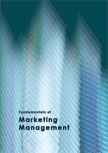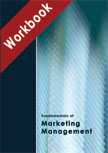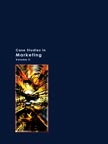Haagen-Dazs: Repositioning a Cult Brand
|
|
ICMR HOME | Case Studies Collection
Case Details:
Case Code : MKTG145
Case Length : 16 Pages
Period : 1990-2006
Organization : Haagen-Dazs
Pub Date : 2006
Teaching Note :Not Available
Countries : Worldwide
Industry : FMCG
To download Haagen-Dazs: Repositioning a Cult Brand case study
(Case Code: MKTG145) click on the button below, and select the case from the list of
available cases:

Price:
For delivery in electronic format: Rs. 300;
For delivery through courier (within India): Rs. 300 + Shipping & Handling Charges extra
» Marketing Case Studies
» Marketing Management Short Case Studies
» Case Studies Collection
» ICMR HOME
» Marketing Management Short Case Studies
» View Detailed Pricing Info
» How To Order This Case
» Business Case Studies
» Area Specific Case Studies
» Industry Wise Case Studies
» Company Wise Case Studies
Please note:
This case study was compiled from published sources, and is intended to be used as a basis for class discussion. It is not intended to illustrate either effective or ineffective handling of a management situation. Nor is it a primary information source.
Chat with us

Please leave your feedback

|
|




<< Previous
Background Note
|
|
The origins of HCI go back to the 1920s when the Mattus family, who were Polish immigrants, ran a business of selling fruit ice6 and ice cream pops in Bronx, New York. The business was small but enough to make ends meet. Reuben Mattus (Reuben) started working young and helped his mother, who managed the business.
In those days, ice cream was a commodity (Refer Exhibit II for a brief history of ice cream) and typically sold for 50 cents a gallon7. Reuben realized that he would have to differentiate his product to improve margins. So, he set out to develop a new way of making ice cream, using fresh cream, egg yolks, and the best of ingredients.
|
By the late 1950s, the off-take of ice creams at the shops that bought from the Mattus family dropped drastically, bringing the business close to bankruptcy. In 1960, Reuben decided it was time to introduce his new ice cream. He launched it under the Haagen-Dazs brand -a meaningless but exotic-sounding name -priced at 75 cents for a single pint8. The new ice cream quickly became popular. The strange-sounding name also contributed to the craze for the ice cream, with many people assuming that it was imported from Denmark or some other North European country -a misconception that has endured to the present day. Mattus even printed a map of Denmark on the outer pack to build on the myth. In 1961, with the business growing, Rueben decided to form a new company. Thus, the Haagen-Dazs Co. Inc. came into existence with the vision of producing "the finest ice cream using the purest ingredients" (Refer Exhibit III for the Haagen-Dazs logo).
|
|
Initially, Haagen-Dazs ice cream was launched in three flavors - vanilla, chocolate, and coffee - and was made available only at gourmet shops. It received wide positive word-of-mouth publicity and the sales grew even without formal advertising.
By 1973, the company had expanded its distribution network throughout the US. In 1976, the first Haagen-Dazs Shop was opened by Doris (Reuben's daughter).
In 1977, The Haagen-Dazs Shoppe Co. Inc. (HSCI), a subsidiary of HCI, was incorporated to retail Haagen-Dazs ice creams through a chain of company-owned and franchised shops. The first national advertising campaign for the Haagen-Dazs brand was launched in November 19819.
In 1983, Pillsbury Co. (Pillsbury)10 acquired HCI (including HSCI). Post-acquisition, Pillsbury extended HCI's operations to outside the US.
|
Excerpts >>
|
|








